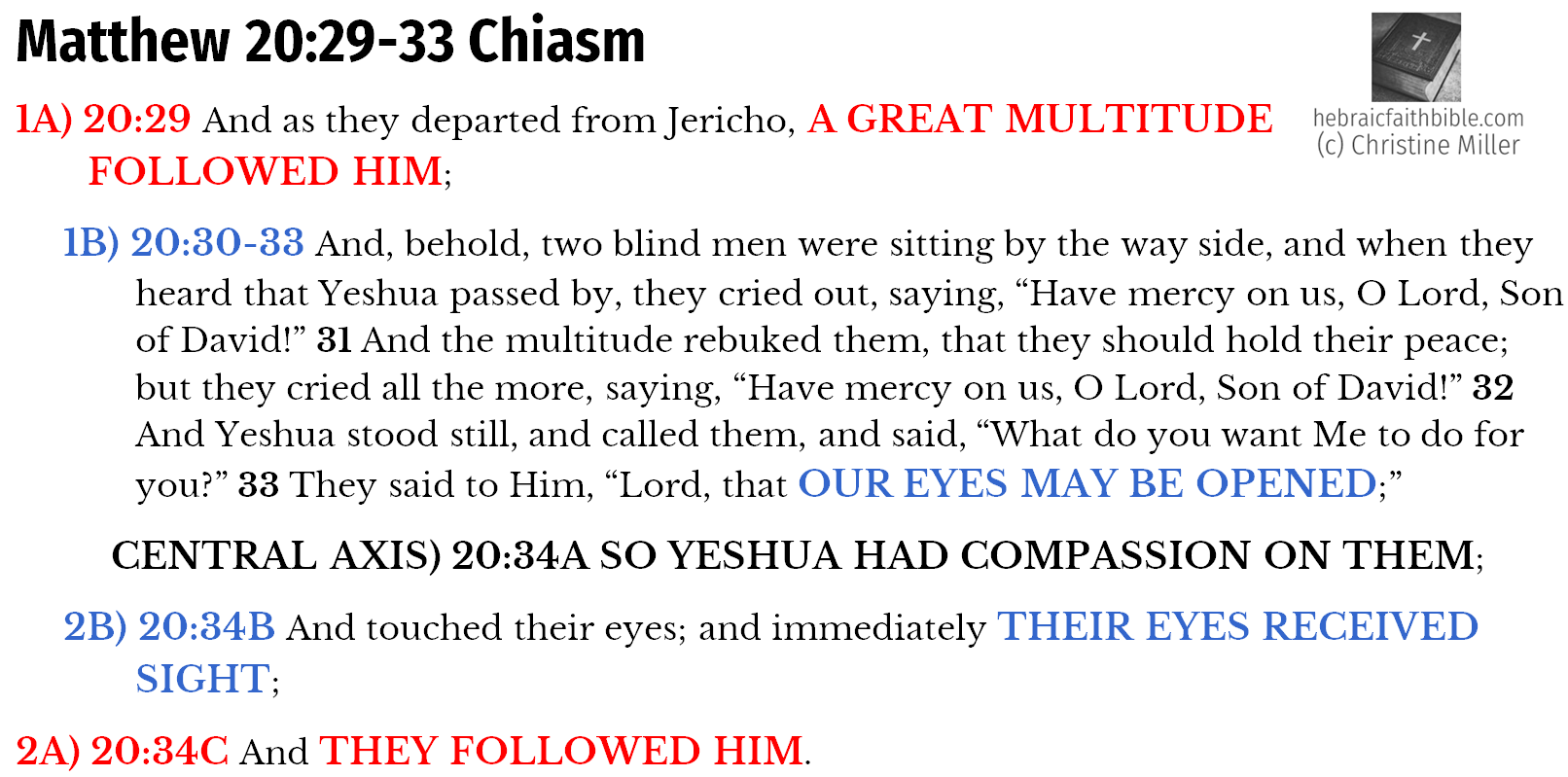Read Matthew 20 here (text coming …) or at Bible Gateway.
The Chiastic Structure Teaching Tool for Mat 20:29-33:
The central axis throws a spotlight on the compassion of Yeshua. Compassion, according to Webster’s, is the sympathetic consciousness of others’ distress together with a desire to alleviate it. It is more than just empathy, for empathy feels the distress; but compassion feels the distress and then does something about it.
The Greek Root Word is Strong’s G4697, σπλαγχνίζομαι splagchnizomai, “to be moved within the bowels,” as the bowels were thought to be the seat of feeling. The Septuagint translators used this word to translate the Hebrew raham, Strong’s H7356, “bowels,” as in:
A righteous man regards the life of his animal; but the tender mercies of the wicked are cruel. Pro 12:10
The Hebrew Root Word for “bowels” is from Strong’s H7355, רחם raham, meaning “to be soft.” The ancient Hebrew pictographs are resh + chet + mem, but according to the Ancient Hebrew Lexicon, the chet was transposed from an original kaph.
resh ר = the head of man, thus head, first, top, beginning, man
kaph כ, ך = the open palm, thus bend, open, allow, tame
mem מ, ם = the water, thus chaos, mighty, blood
The parable being told is the man (resh) whose palm is opened (kaph) toward another in trust, friendship, or blessing is like water (mem) allowed to flow when a dam has been removed.
Isn’t it amazing that Yeshua literally feels our distress, so much so that His palm is open toward us in trust, friendship and blessing as living water, so that He might alleviate our distress – and yet this is the truth the Bible is teaching.
For we do not have a High Priest who cannot sympathize with our weaknesses, but was in all points tempted as we are, yet without sin. Let us therefore come boldly to the throne of grace, that we may obtain mercy and find grace to help in time of need. Heb 4:15-16


















Leave a Reply